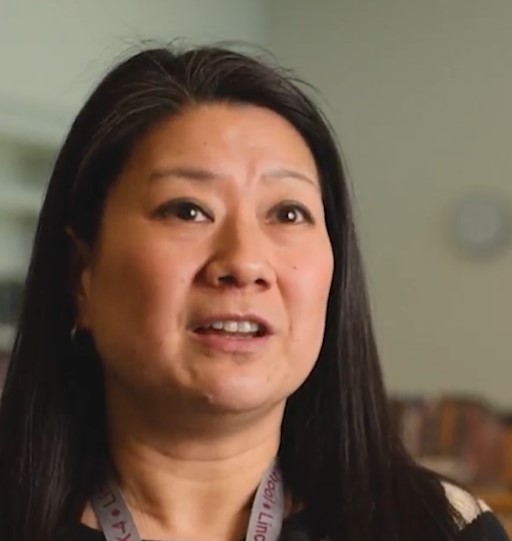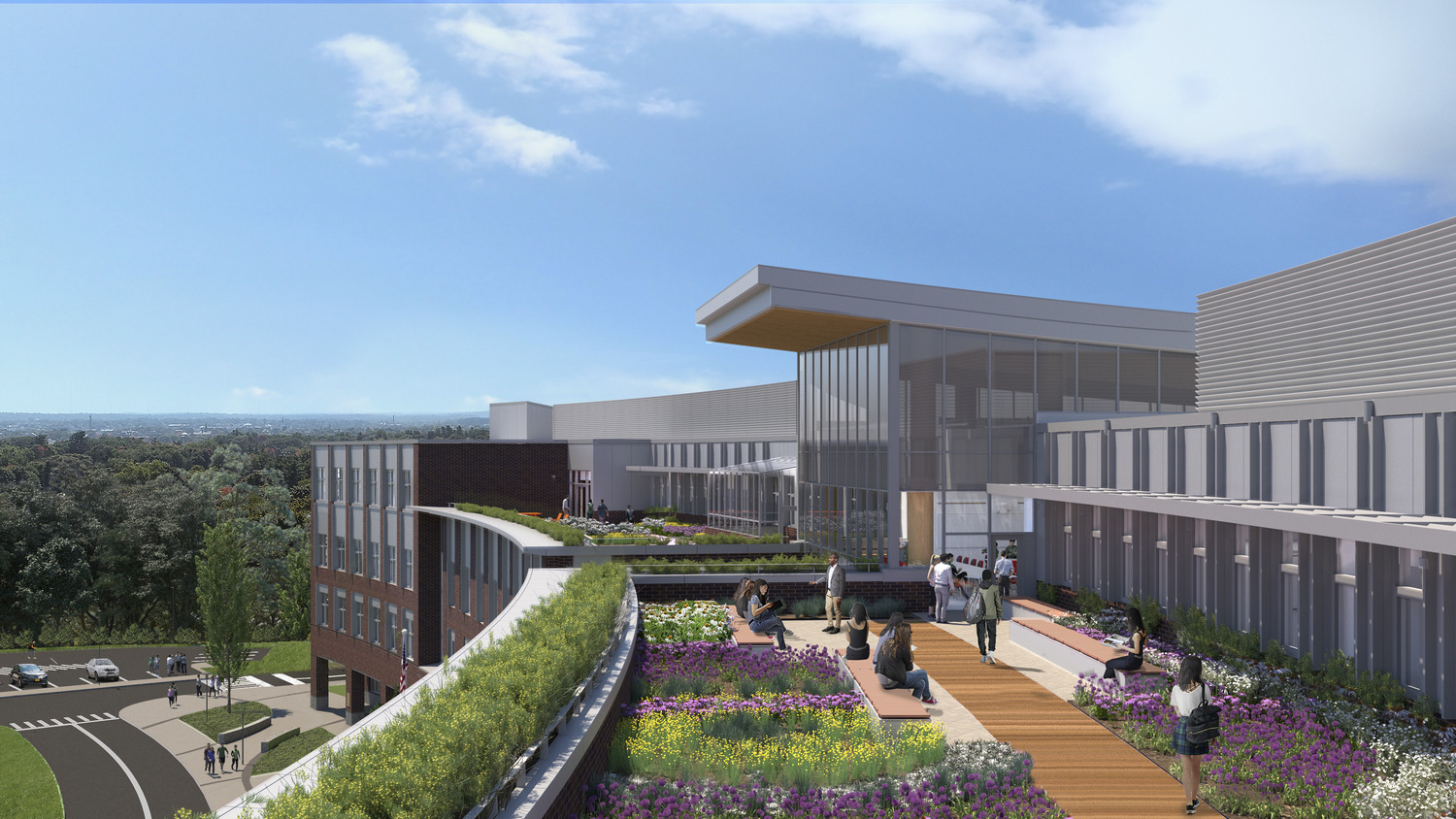
Sustainably designed schools provide young people with better, healthier learning environments.
They also serve as the perfect stage for teaching “environmental literacy”—the ability for students to make environmentally sound decisions and take appropriate action.
West Elementary School and Shawsheen Preschool
View Project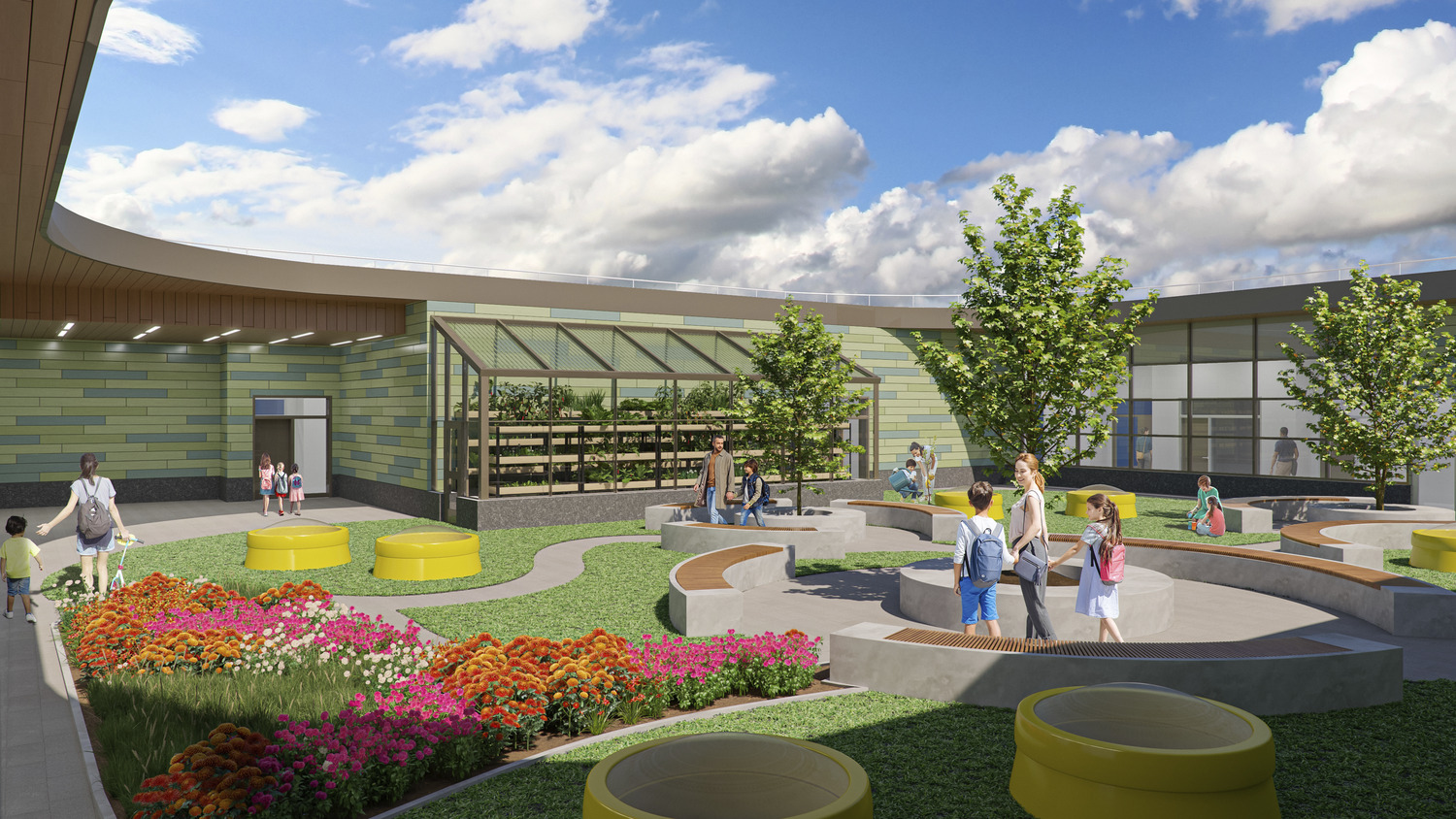
Outdoor learning spaces are a cornerstone of environmental literacy.
These spaces allow for hands-on, experiential learning tied into schools’ STEM curricula. Rather than learn from a textbook or computer screen, students can become environmentally literate by getting outdoors and interacting with the built environment.
At SMMA, we embed environmental literacy into all our K-12 school projects.
Environmental literacy has become an essential part of modern school design, along with better-known trends such as project-based learning.
Phelps Elementary School
View Project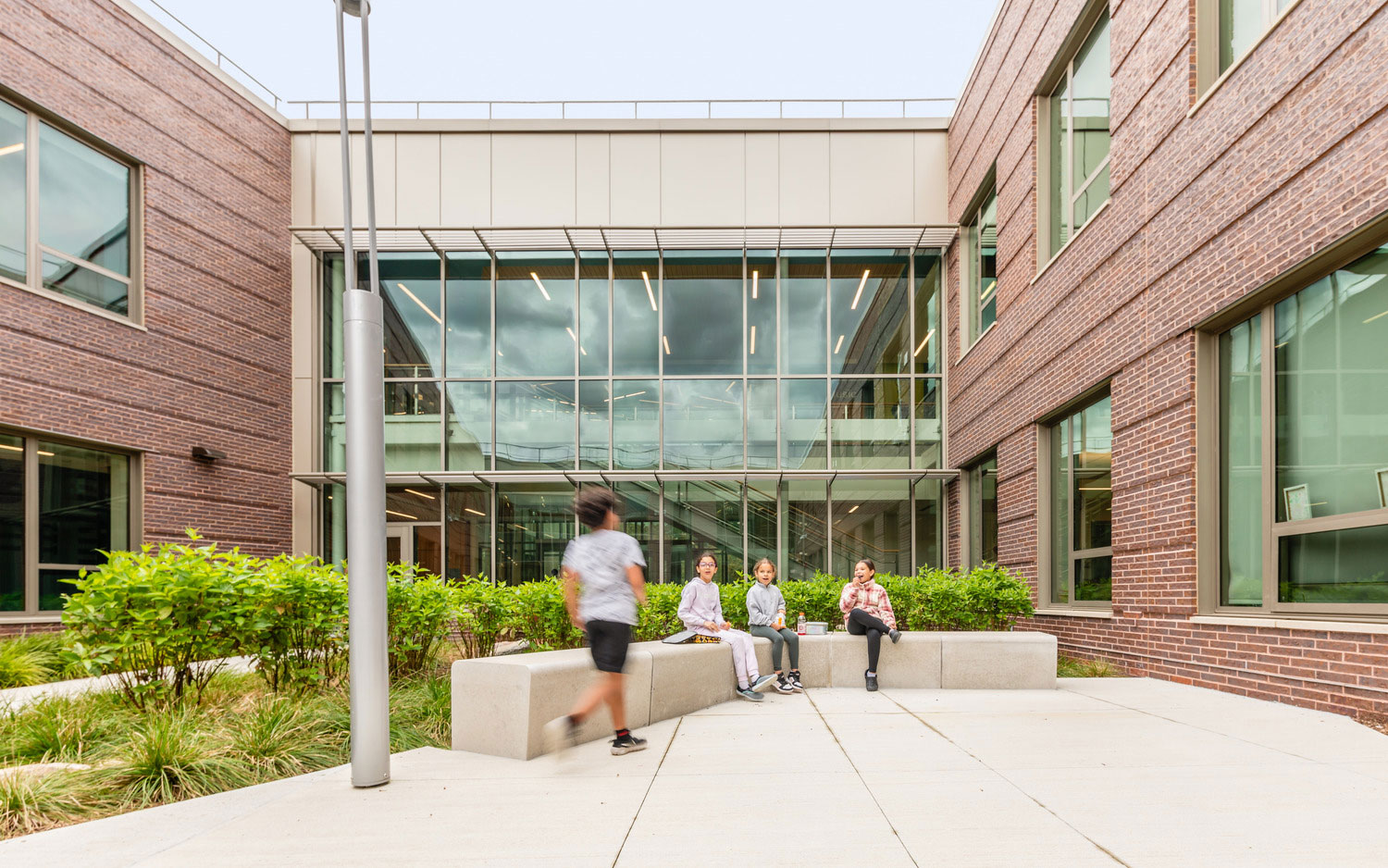
What is environmental literacy?
UNESCO defines environmental literacy as “a functional education that provides people with the knowledge, skills, and motives to cope with environmental needs and contribute to sustainable development.”
In the context of schools, we can add another factor: environmental literacy means preparing students to take action. Students can learn how to affect change through their day-to-day behavior, career choices, or even activism.
The Lincoln School
View Project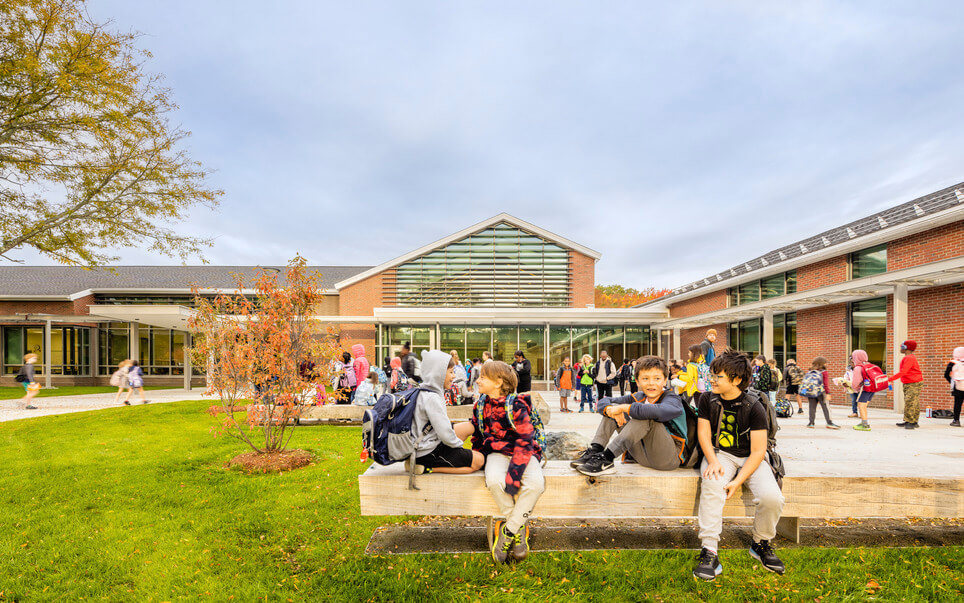
When we speak to educators, the topic of environmental literacy is never far from their minds. “Our students are really excited to be able to stand up for something,” says Sarah Collmer, K-4 Principal at The Lincoln School, a net-zero school designed by SMMA. (Click on Sarah’s image to hear more about environmental literacy in Lincoln.)
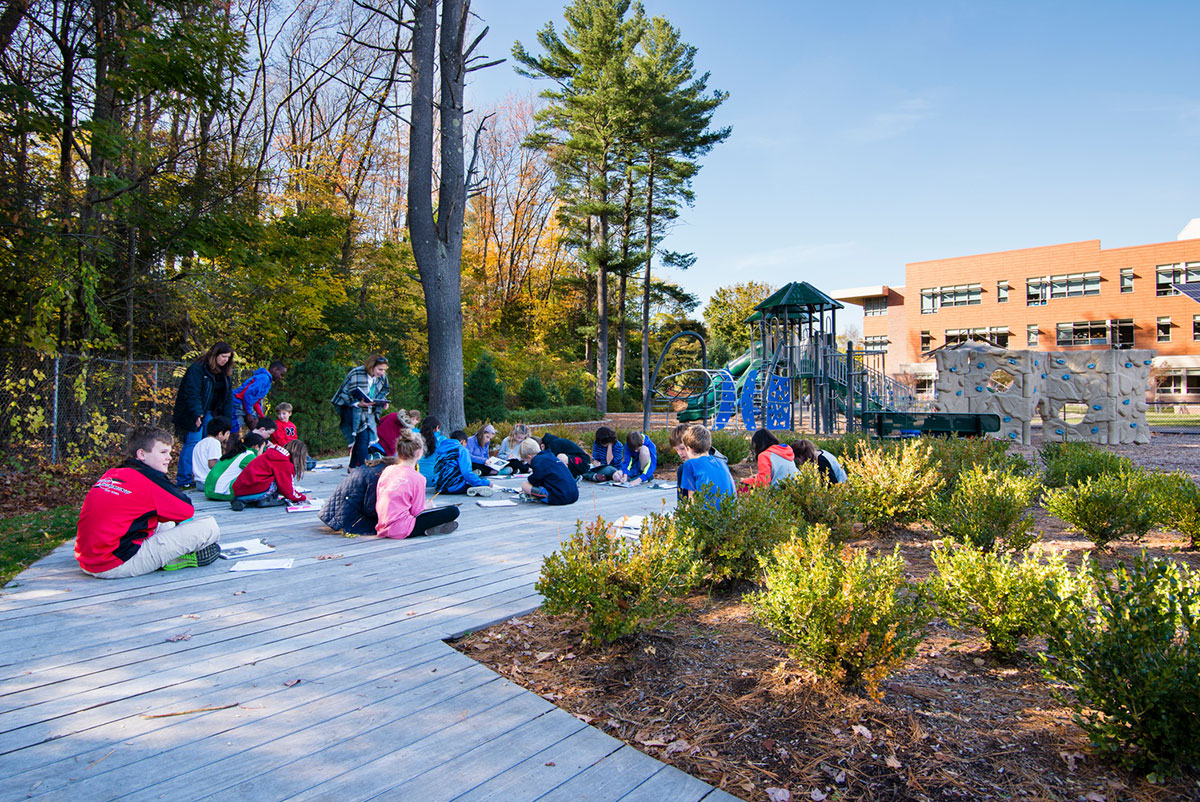
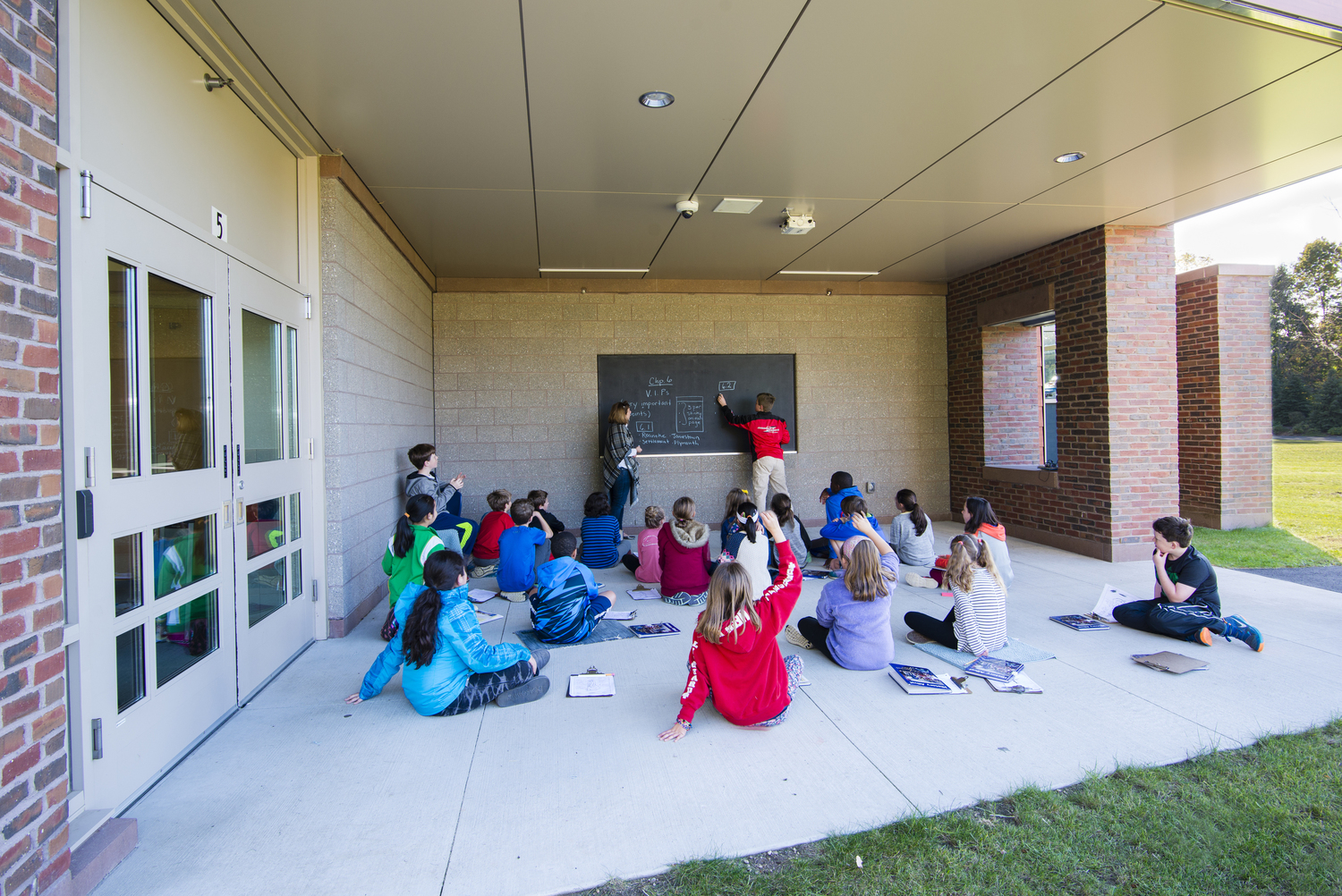
From improved health to broader learning, there are many benefits of outdoor learning environments in schools.
The Benefits of Outdoor Learning
|Outdoor learning spaces give students and teachers a direct connection to nature. The educational benefits are obvious: students get to soak up the environment first-hand as part of their STEM curriculum. Outdoor learning models have been proven successful in countries with exceptional learning outcomes, such as Finland.

Just as important are the health and wellness benefits. According to research by the Safe Routes to School (SRTS) program, only 13% of children in the U.S. walk to school, down from 48% four decades prior. The good news for this generation of car- and bus-riders is that outdoor learning spaces reduce risks to children’s physical and mental health by providing access to nature. What is more, many schools use outdoor spaces to host universal learning and special education programs catered to children with sensory needs.

What outdoor learning spaces best promote environmental literacy?
Quick and easy access to the outdoors is an integral part of environmental literacy. In schools, this is best provided by green vegetated roofs, outdoor classrooms, and trails or pathways.
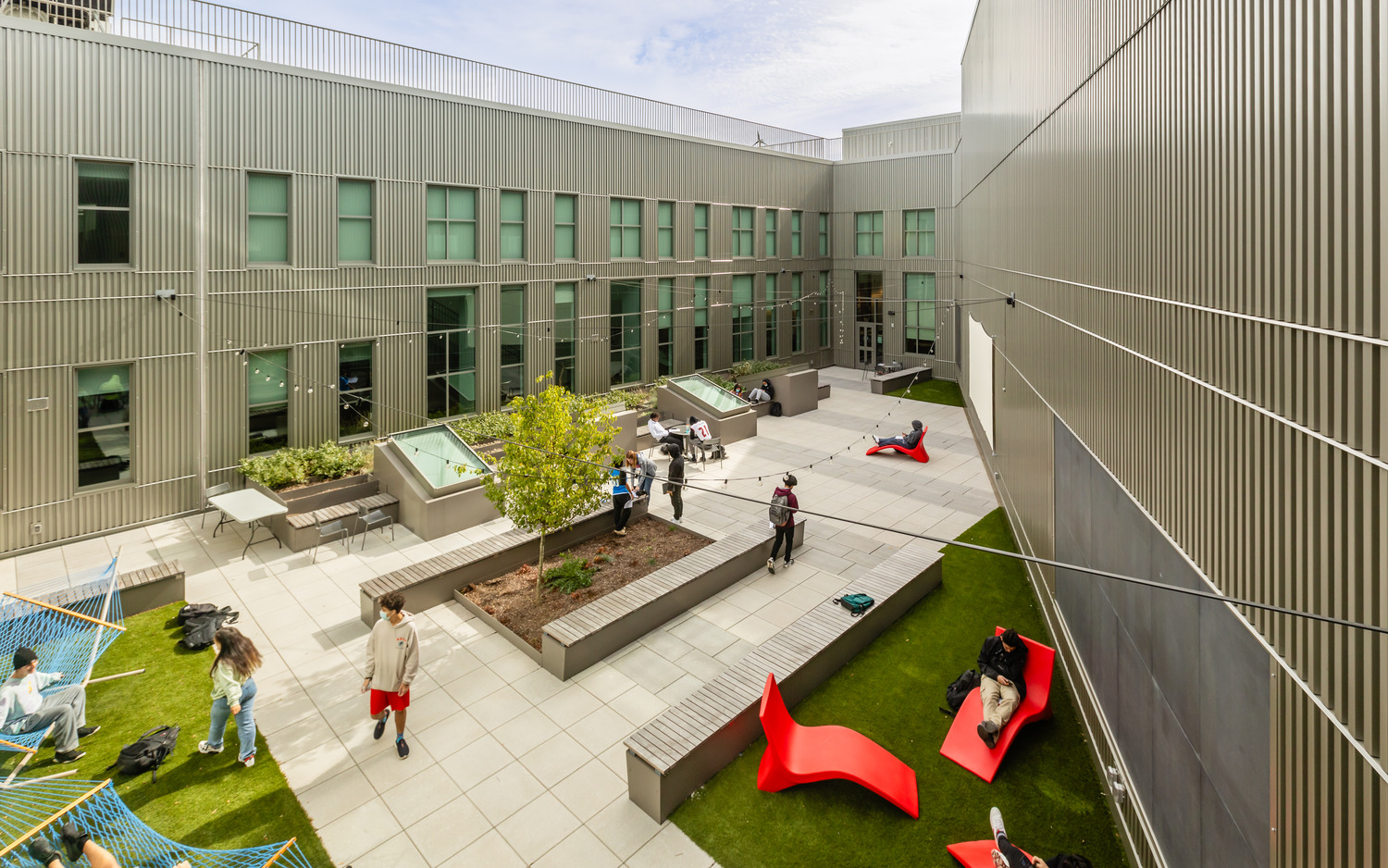
Green roofs offer both aesthetic and educational benefits.
A green roof (or “living roof”) is a roof or terrace either partially or fully covered with vegetation, planted over a waterproof membrane. Students learn how green roofs reduce heat-island effect, support biodiversity, and improve the building’s thermal performance. Green roofs are especially valuable for students attending urban or inner-city schools, where lack of outdoor space is a perennial problem.
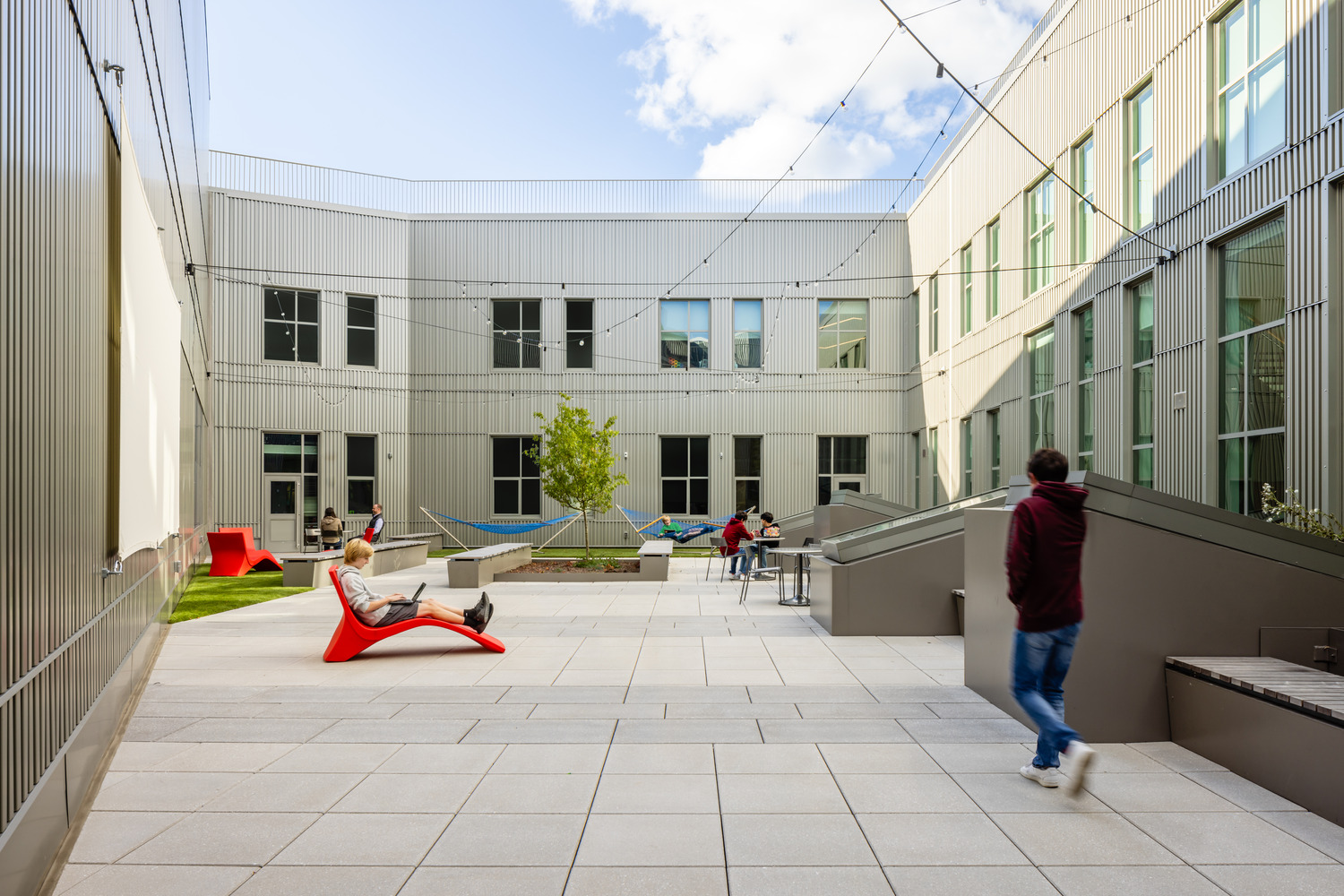
Somerville High School in Massachusetts features two green roofs, one of which serves as a courtyard on the building’s third floor. With its planting beds, permeable paving, and outdoor instruction area, the space is designed as much for environmental literacy as for recreation and escape.
Somerville High School features two green roofs, one of which serves as a courtyard on the building’s third floor. With its planting beds, permeable paving, and outdoor instruction area, the space is designed as much for environmental literacy as for recreation and escape.
View Project
Green roofs offer both aesthetic and educational benefits.
A green roof (or “living roof”) is a roof or terrace either partially or fully covered with vegetation, planted over a waterproof membrane. Students learn how green roofs reduce heat-island effect, support biodiversity, and improve the building’s thermal performance. Green roofs are especially valuable for students attending urban or inner-city schools, where lack of outdoor space is a perennial problem.

North Middlesex Regional High School
View Project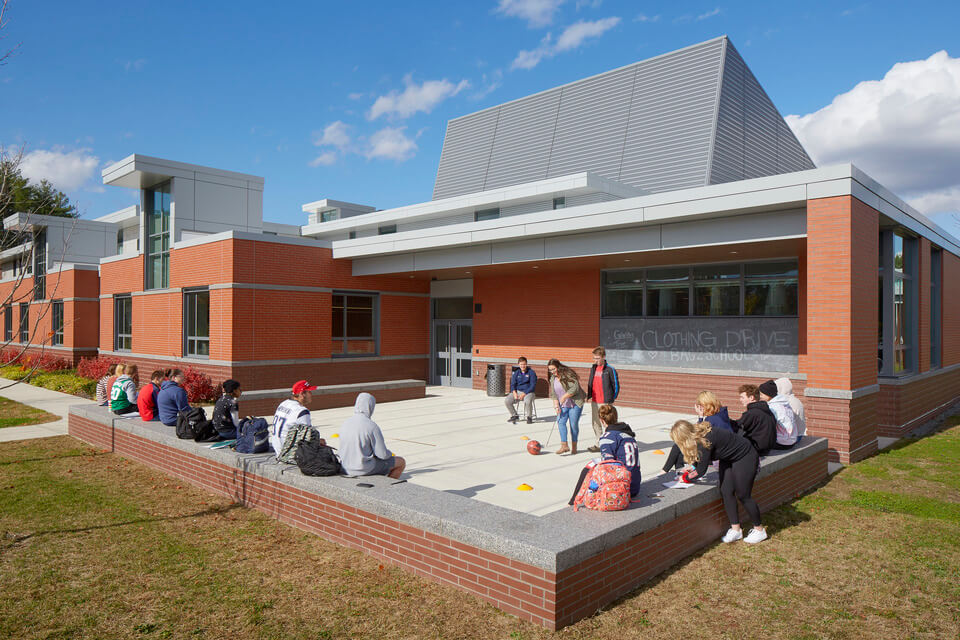
Outdoor classrooms suit rural or suburban schools that sit on more spacious sites.
Like green roofs, outdoor classrooms typically feature planting beds and permeable paving, as well as spaces for outdoor instruction. Most outdoor classrooms are located right next to the school building. Some act as an extension of the indoor classroom, much like a home’s backyard patio.
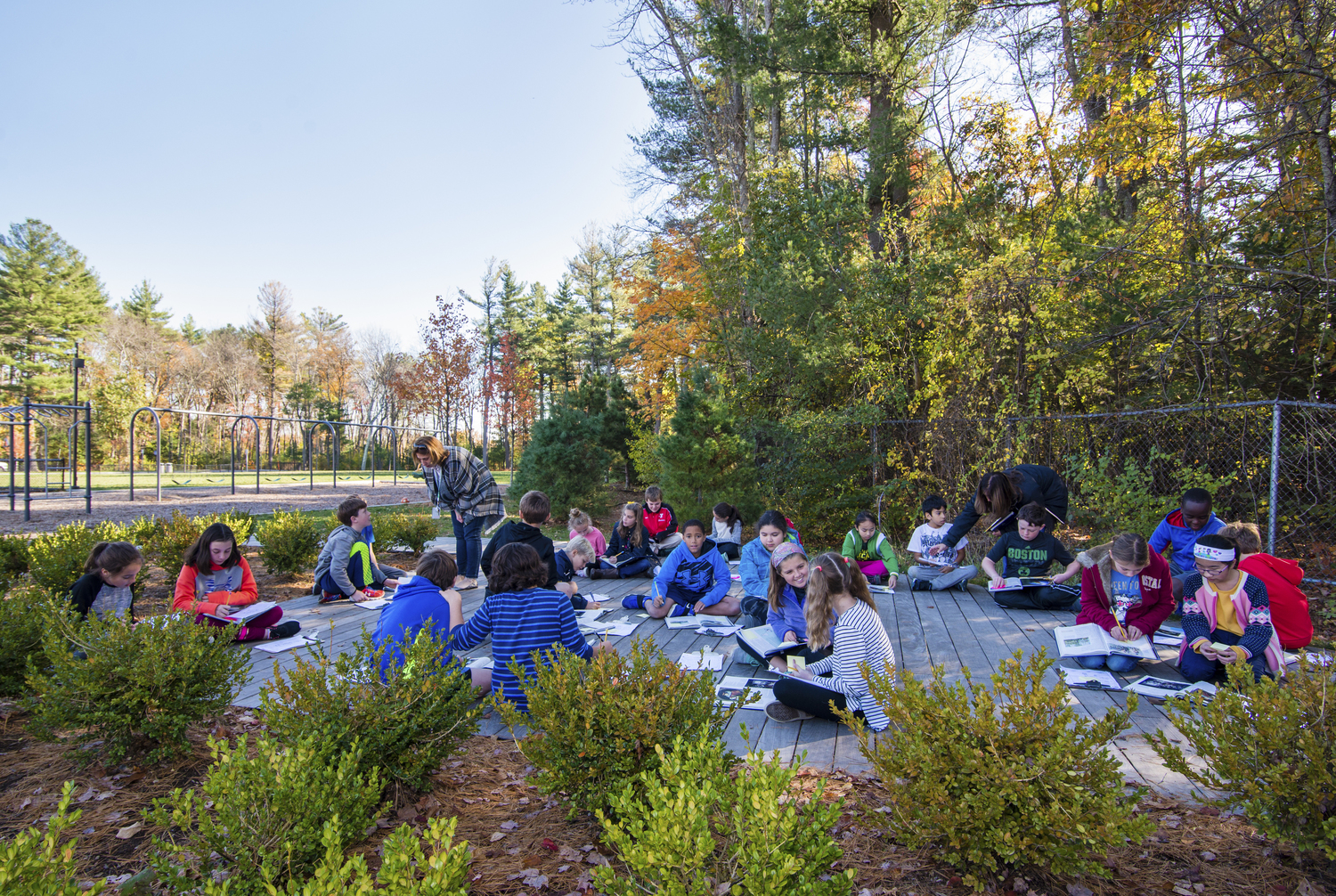
In Andover, MA, Bancroft Elementary School’s outdoor classroom sits on the very edge of the school site and allows students to get up close with nature.
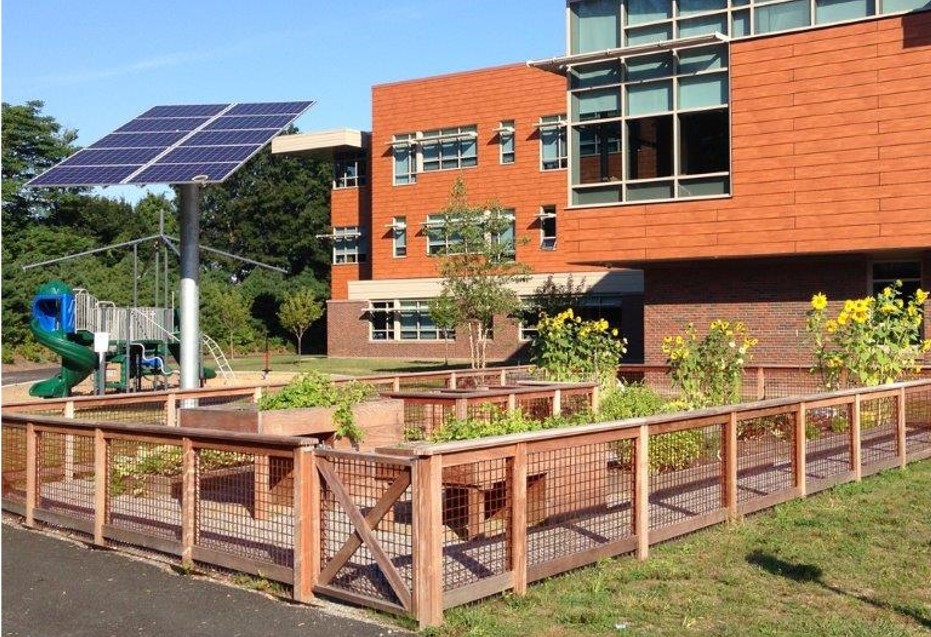
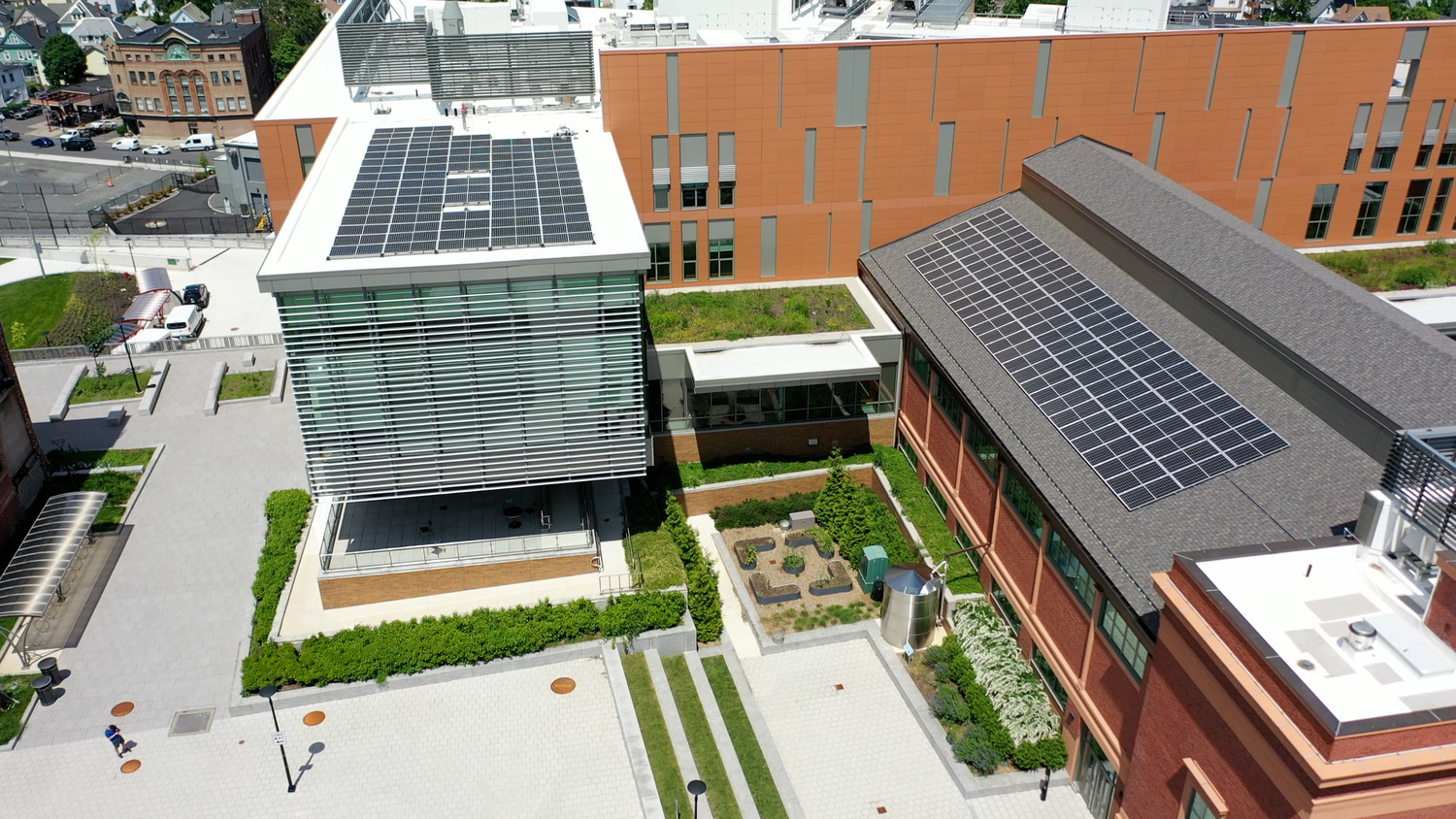
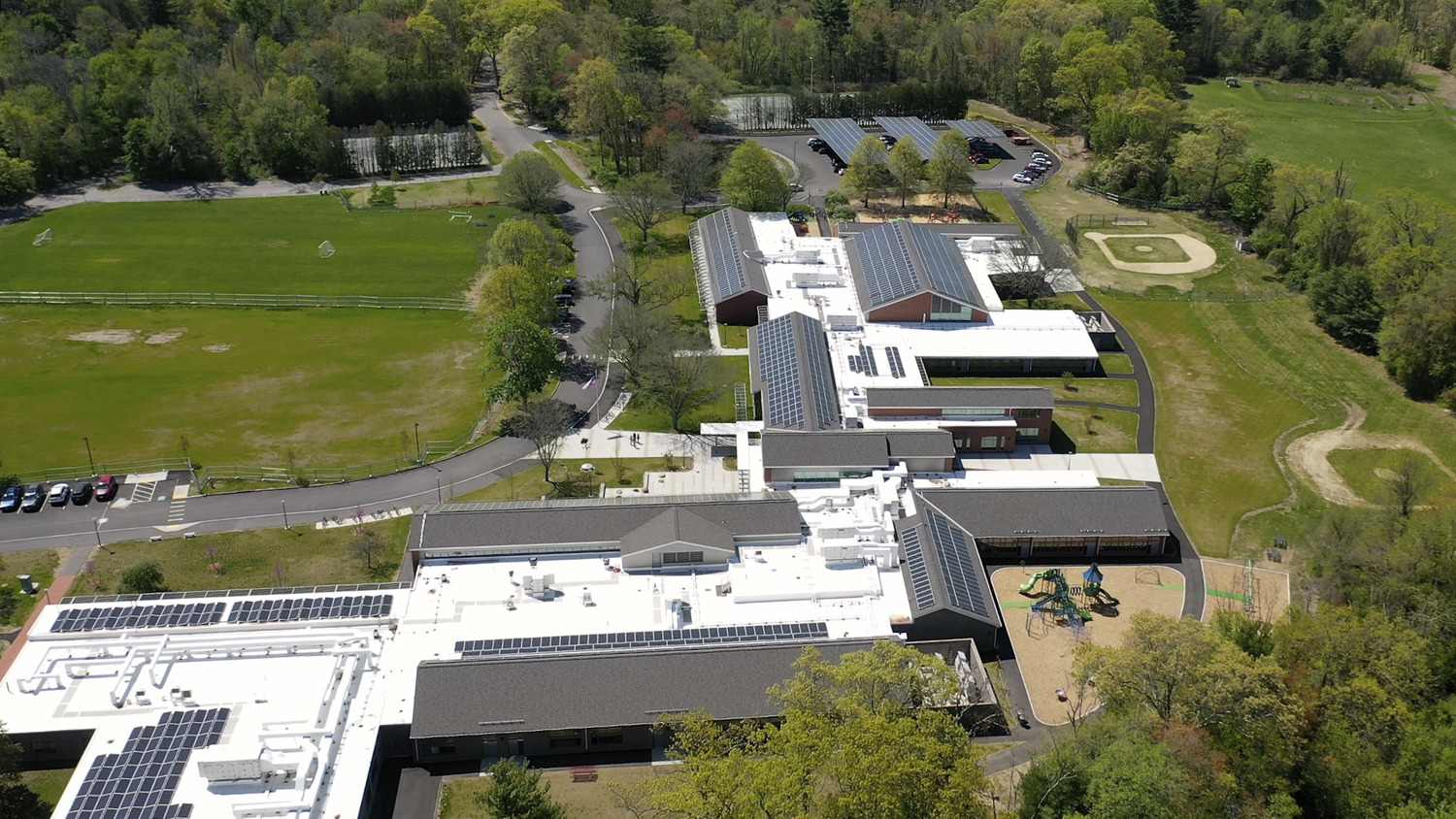
Trails and pathways give students the chance to explore surrounding nature.
At the rural Lincoln School, a network of paths weave through the site, providing easy access to wetlands and forests. The paths are made from porous pavement and are flanked by specially designed bioretention gardens.
